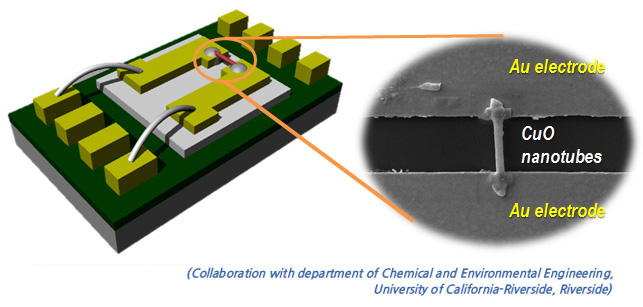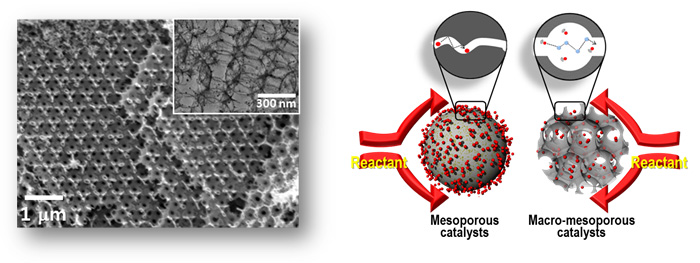Sensor Materials and Devices
Bio sensor
Detection and quantification of biological and chemical species are critical to many areas of health care and the life sciences, from diagnosing disease to the discovery and screening of new drug molecules. To achieve rapid response, high sensitivity and label-free detection, devices based on 1D nanostructures are emerging as a outstanding platform. We fabricated the conducting polymer nanowire based biosensor via electrospinning method and detected Immunoglobulin G (IgG) and cancer biomarkers.

Gas Sensor
Semiconductor gas sensor have been investigated for the purpose of practical applications, such as gas leak detectors and environmental monitoring. When target gas molecules are adsorbed on the surfaces of nanostructures, the electronic property is changed. For the highly sensitive gas sensors, porous or hollow materials are promising candidates because their structures can usually provide a large surface-to-volume ratio that can greatly facilitate gas diffusion and mass transport in sensor materials. We fabricated a metal oxide nanowire/tube based gas sensor using a electrodeposition and electrospinning method.

Macro-mesoporous catalyst materials
To enhance catalytic activity in a reaction, it is important to improve the accessibility of the reactant to the active site. Macropores (≥50 nm) can greatly enhance the mass transportation of fluids and improve the access of a reactant to active sites in the center of catalysts, improving reaction efficiency. We synthesized the macro-meosporous catalysts with the assistance of template. Catalytic activity of the macro-mesoporous catalysts was dramatically increased than that of mesoporous catalysts.

